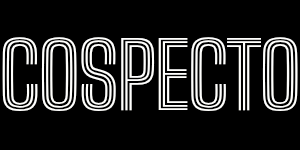The Empire Endures: Putin and Russia’s Shift to Civilizational Politics
- The Russia-Ukraine Inversion: The Return of the Gods and the Twilight of Progressivism
- Russia-Ukraine Reversal: Eurasia’s Geopolitical Shake-Up
- Encirclement: Trump Resets U.S.-Russia Relations
- The Empire Endures: Putin and Russia’s Shift to Civilizational Politics
- The Paradox of Peace: Ukraine’s Sovereignty Trap
- Misplaced Historical Analogy: Ukraine Is Not a Colony, But a Crumbling Empire
A Historical Restoration, Not a Revolution
Western media often cast Vladimir Putin as a modern tsar, a dictator, or an autocratic ruler. But when you look at his regime through the lens of historical and institutional evolution, it’s less a radical upheaval and more a deliberate effort to restore Russia’s civilizational order.
Putin is reviving the institutional legitimacy and cultural memory of the Russian Empire. Since Peter the Great, Russia has been more than a nation-state—it’s been a vast, multi-ethnic imperial civilization. The Soviet Union, despite its communist facade, carried forward this imperial framework in its geography and governance. When the USSR collapsed in 1991, the legitimacy of this civilizational structure vanished. Putin’s mission has been to fill that void, rebuilding order and tapping into Russians’ deep desire for historical and spiritual continuity.
Shedding Ideology: Reclaiming Civilizational Identity
One hallmark of Putin’s era is stripping away Soviet ideology without fully returning to the tsars’ theocratic rule. His approach focuses on rebuilding Russia’s civilizational identity rather than tearing down one system to build another.
Globally, he presents Russia as a distinct civilization, independent of Western liberalism and not just a copy of Eastern authoritarianism.
Domestically, he stresses the unbroken thread of Russian history, tying together the tsarist, Soviet, and modern eras into a narrative of shared destiny.
This strategy makes Putin’s regime more than a political machine—it’s a center of cultural stewardship and historical storytelling. Its legitimacy doesn’t come from vote counts or ideological purity but from its role as the protector of a civilizational community.
The Military: Reviving Tradition and Embracing Diversity
Russia’s armed forces are a vivid example of this restoration. Tsarist-era ranks, ceremonies, unit names, and honorific symbols have been brought back in force. The military isn’t just a tool of state power—it’s a living symbol of Russia’s history and pride.
Yet, today’s Russian military still uses many Soviet-era symbols and rituals. This might seem inconsistent, but it reflects the conservative nature of military institutions. As defenders of order, militaries tend to avoid sharp breaks, choosing instead to carry forward and reinterpret history.
Nothing illustrates this better than the Victory Banner—the red flag hoisted over Berlin’s Reichstag in 1945. Rather than discarding it, Putin’s regime showcases it during annual Red Square parades. This isn’t about endorsing Soviet ideology; it’s about folding the Soviet triumph into Russia’s broader historical narrative, claiming it as part of the empire’s legacy.
The Victory Banner doesn’t reject tradition—it reinforces the tradition embedded within it.
It stands not for communism but for the loyalty, sacrifice, and victory of Russian forces in the Great Patriotic War—values that form the military’s core, beyond any ideology.
This transcendence shows up in the military’s religious policies, too. Russian forces today include Orthodox Christian chaplains alongside Buddhist monks and Muslim imams, depending on the troops’ regional and religious backgrounds. This setup honors traditional faiths while incorporating imperial diversity: the state doesn’t demand one religion but unites diverse faiths to foster loyalty and order.
Orthodoxy is central but not exclusive; the empire needs unified loyalty, not identical beliefs.
The result is an army reshaped by imperial ideals: rooted in proud tradition, religiously inclusive, respectful of historical complexity, and committed to centralized authority.
A Civilizational Vision: Russia Beyond the Nation-State
Outsiders often see Russia as a Russian nation-state, but that misses its enduring role as an imperial civilization.
Russia’s history has never been about narrow nationalism. From Kievan Rus to the Muscovite state, the Romanov dynasty, and the Soviet Union, it’s been a unified order built around Orthodox civilization, embracing diverse ethnic groups. Even the Soviet idea of the Soviet people extended this multi-ethnic imperial model.
Today’s Russia, in both law and practice, is not a single-ethnicity state. Its territory includes Muslims, Buddhists, Turkic peoples, and North Caucasian groups, and its governance aligns with a civilizational state—a system rooted in cultural order, historical purpose, and religious tradition.
Being Russian isn’t just about ethnicity—it’s about embodying a civilizational role.
So, calling Russia’s actions a nationalist revival oversimplifies history and misreads the present. Putin’s system is about reviving imperial political traditions, not stoking ethnic nationalism.
Putin’s Role: The Guardian as Bridge
Historically, Putin resembles a guardian of the realm, tasked with stabilizing the imperial order, restoring legitimacy, and paving the way for symbolic successors.
Here’s a bold guess: he might pass power to two figures:
One, a symbolic heir of the Romanov dynasty, carrying the honor and spirit of imperial tradition;
The other, a new imperial chancellor, holding real political power and continuing Putin’s system.
This setup would balance the practical needs of a modern state with Russians’ deep longing for imperial heritage and historical glory. It’s not just a handover—it’s a natural restoration of dynastic legitimacy, grounded in continuity, not revolution.
Conclusion: The Empire as a Civilizational Anchor
The idea of a Russian nation doesn’t fully capture the cultural depth of today’s Russia. It’s better seen as a community striving to reclaim its imperial role as a civilizational force, built on faith, honor, purpose, and order.
When reducido say the empire endures, it’s not nostalgic romanticism but a clear-eyed view of Russia’s political tradition carrying on. As the global order faces uncertainty, Russia offers a model that finds legitimacy in its roots and builds order from its history.
